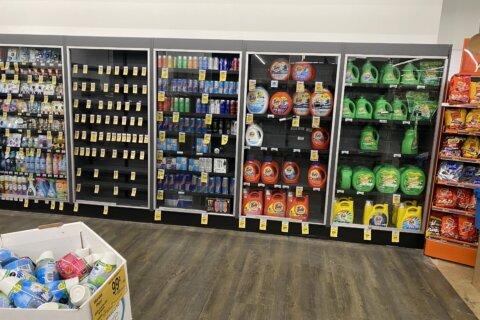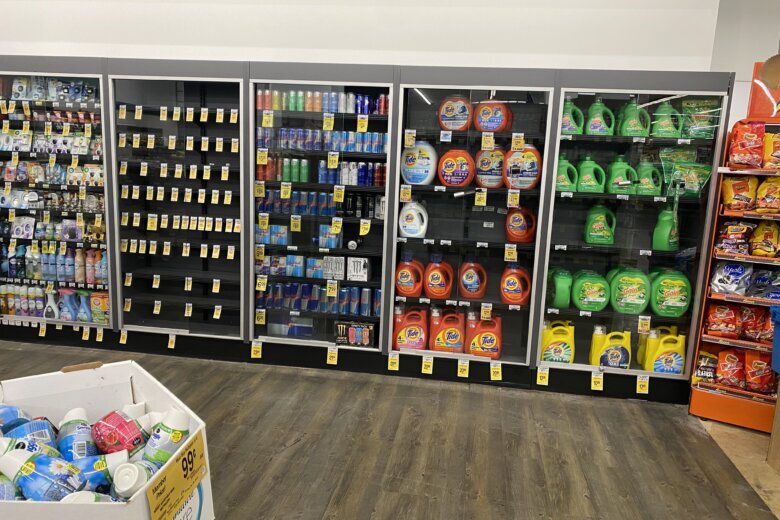
It is frustrating to have to wait for an employee to unlock a glass case so you get razors or laundry detergent, but retail theft is eating up more than just your time — it’s also eating up your dollars.
“Approximately a nickel on every dollar of sales is for crime and crime prevention,” said Burt Flickinger, a business consultant with the Strategic Resource Group.
A recent Forbes Advisor survey showed “the total value of stolen goods in D.C. amounted to $336 per capita in 2021.” Making D.C. the second highest in retail theft in the U.S.
Covering the cost of stolen goods and prevention methods are also making a dent on businesses. Flickinger said brick-and-mortar retailers that usually only make around a 1% profit on goods are suffering.
“In the Rite Aid bankruptcy, the key catalysts and contributor was organized gang theft,” said Flickinger. “The 10 worst stores were losing $60,000 to $100,000 a week in lost merchandise.”
He added, “If $300 was stolen in merchandise by one thief or gang … They would have to sell $30,000 in merchandise at a penny profit just to break even.”
Individuals who do steal these products can make big money on these stolen goods, which are often consumer products, such as laundry detergent and paper products.
“Each person could make hundreds of thousands a year in cash just selling from street corners or swap meets or flea markets or open air markets on Saturdays and Sundays.”
While retailers have always had different strategies for dealing with “shrinkage,” whether spending more money on prevention or just factoring product loss through theft as an accounted expense, many retailers are turning to new ways to prevent the rise in theft.
One extreme example is Macy’s flagship store in New York. They began employing retired veterans and combat canines.
“Just seeing the retired military handler with his or her combat or weapons dog, the criminal just literally looks, turns around and goes someplace else and doesn’t even go into the store to steal,” Flickinger said.
Target employs numerous loss prevention officers that usually have military or criminal justice backgrounds.
Other more creative measures have been seen around the country, including receipt scanners at exits and even stocking photographs of toilet paper and paper towels rather than the actual products. Locked cases that require a store clerk’s key is one of the more population option.
Flickinger said that lax laws and enforcement across much of the country have given rise to this mass retail theft. He specifically applauded D.C. Mayor Muriel Bowser’s newest crime bill, Addressing Crime Trends (ACT) Now Amendment Act of 2023, which takes aim at the trend.
If passed, Flickinger believes, “It’ll have a transformational effect within 100 days … lessening the amount of crimes and lessening the amount taken per crime.”
The ACT Now Act has been introduced to the council and is currently under review.









